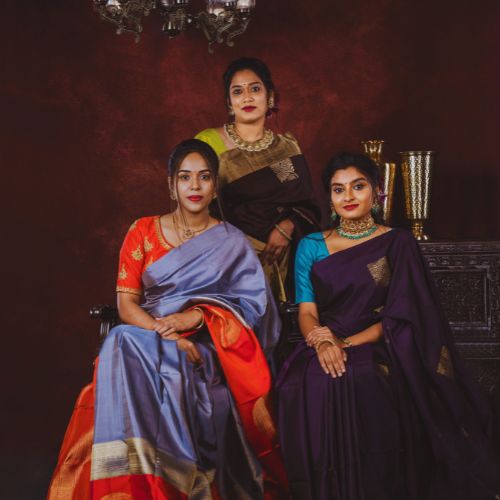Paisley Patterns: Shaping the Future of Fashion and Design
For centuries, paisley patterns, characterized by their intricate and elegant designs, have held a captivating allure worldwide. Emerging in the East and gaining popularity in the West, these patterns have evolved into a symbol of timeless style, cultural heritage, and artistic expression. This exploration delves into the rich tapestry of history, symbolism, and the contemporary relevance that paisley patterns continue to embody, bridging cultures and transcending temporal boundaries.

Symbolism and Meaning: A Deeper Exploration
The paisley pattern is laden with symbolism, carrying diverse meanings across cultures. Frequently associated with the natural world, it symbolizes plants, flowers, and leaves. The distinctive curved teardrop shape at the pattern's core is often likened to a budding shoot or a seed, embodying the concepts of growth and vitality.
Moreover, the paisley motif has been intertwined with notions of eternity and spiritual enlightenment. Its intricate and unbroken design is believed to symbolize the cyclical nature of life, serving as a representation of the harmonious balance between birth, death, and rebirth. This multifaceted symbolism imbues the paisley pattern with a profound and timeless significance.
HISTORY OF PAISLEY
Ancient Persia ( Iran)
The earliest instances of paisley-like motifs can be traced back to ancient Persia, dating as far back as 200–650 CE. These motifs, known as "boteh" or "buta" in Persian, originally represented plant shoots, specifically the budding shoots of a date palm. The iconic teardrop shape forming the core of the paisley pattern is believed to have symbolized fertility and the regenerative power inherent in nature. This historical connection adds depth and cultural significance to the timeless and intricate paisley designs we continue to appreciate today.
Mughal Empire in India
Paisley patterns rose to prominence during the reign of the Mughal Empire in India (1526–1857). The Mughal emperors and nobility, deeply influenced by Persian art and culture, integrated paisley motifs into various facets of their lifestyle, including textiles, clothing, jewelry, and architecture. The elaborate paisley designs adorned opulent fabrics, most notably the famed Kashmiri shawls, which gained widespread admiration and became highly coveted among royalty and the affluent elite. This cultural fusion left an indelible mark on the evolution and widespread appreciation of paisley patterns in India's historical tapestry.
The Scottish Connection
Despite its Eastern origins, the paisley pattern gained notable popularity in the Western world due to its association with the town of Paisley in Scotland. In the 19th century, Paisley evolved into a major centre for textile production, particularly specialising in shawls inspired by Indian designs. The town's skilled weavers adeptly reproduced the intricate paisley patterns, leading to the term "paisley" being attributed to these designs due to their strong association with the town. This historical link between Paisley and the replication of Indian-inspired patterns significantly contributed to the widespread recognition and adoption of paisley in Western textiles.
British East India Company
The infusion of paisley patterns into the Western world is rooted in the trade interactions facilitated by the British East India Company with the Indian subcontinent. Importing sumptuous Indian textiles, particularly shawls adorned with intricate paisley motifs, the company captivated the imagination of European consumers. The widespread popularity of these paisley-adorned shawls in Europe, particularly during the 18th and 19th centuries, propelled the paisley pattern into the mainstream of Western fashion and design. The allure of these exotic imports played a crucial role in establishing paisley as a distinctive and favoured pattern in Western cultures.
The Victorian Era:
In the 19th-century Victorian era, paisley patterns solidified their place as a staple in European fashion and home decor. The elaborate and exotic designs found on paisley shawls came to symbolize wealth, status, and refined taste. These coveted motifs transcended beyond clothing, making their way into accessories and various household items, including wallpapers and upholstery fabrics. The widespread adoption of paisley during this period marked its enduring influence on both personal style and interior aesthetics in Victorian Europe.
Counterculture and Psychedelia:
In the 1960s, the paisley pattern underwent a notable resurgence, taking on new significance within the counterculture and psychedelic movements. The dynamic and swirling designs of paisley became emblematic of peace, love, and the exploration of altered states of consciousness. This iconic motif adorned clothing, album covers, and posters, serving as a powerful symbol of rejecting mainstream societal norms and embracing individuality and free expression. The paisley pattern, during this era, became a visual manifestation of the cultural shifts and ideals associated with the transformative 1960s movements.
Paisley in 2000s
In the 2000s, the paisley print motif continued to thrive, making appearances in the realms of fashion, media, private label brands, and shop windows. A notable instance occurred at the 2010 Winter Olympics when the Azerbaijan team garnered attention by donning modern, graphically vibrant paisley trousers, gaining significant exposure during the opening ceremony.
During this period, designers and private label brands drew inspiration from the timeless paisley motif. The clothing label Pretty Green, launched with Liam Gallagher in 2009, incorporated paisley prints into their collection, featuring them on shirts, polos, and shoes. Renowned designers, including Balenciaga, Jill Sander, Jonathan Saunders, and Stella McCartney, showcased various interpretations of the paisley motif on their catwalks, breathing new life into this enduring design. The paisley pattern's versatility and enduring appeal continue to captivate and inspire the fashion landscape in the contemporary era.
TYPES OF PAISLEY
Traditional paisley: Traditional paisley patterns are characterized by the iconic teardrop-shaped motif, known for its intricate detailing and symmetry. These classic designs often incorporate curving lines, swirls, and floral motifs, creating a visually dynamic composition. The teardrop shapes within traditional paisley patterns vary in size and are frequently arranged in a repetitive and symmetrical fashion, contributing to an overall sense of balance and harmony in the design.
Paisley Border: Paisley Border patterns centre on the borders or edges of textiles or design
elements, often employed in fabrics like scarves or garment borders. In this variation, the paisley motif takes prominence along the edges, providing an elegant and decorative touch. Paisley borders can range from simple to intricate, incorporating elements such as flowers, leaves, or geometric shapes to enhance the overall aesthetic appeal. This style is commonly utilized to frame and accentuate the edges of various textile items, adding a refined and stylish dimension to the design.
Paisley Fill: Paisley Fill patterns involve saturating a surface or fabric entirely with paisley motifs. The teardrop shapes are densely arranged, forming a continuous and intricate pattern. This design approach is commonly applied to textiles such as upholstery fabrics or wallpapers, where the paisley motif covers the entire surface, resulting in a visually captivating and cohesive impact. The densely packed paisley fill creates a rich and textured aesthetic, making it a popular choice for those seeking a distinctive and ornate design for their interiors.
Paisley Jacquard: Paisley Jacquard patterns are renowned for their intricate and detailed designs, achieved through Jacquard looms that enable the weaving of complex patterns into the fabric, including paisley motifs. Commonly used in upholstery, curtains, and high-end fashion, paisley jacquard fabrics contribute a luxurious and textured element to the overall design. The Jacquard weaving technique enhances the depth and sophistication of the paisley pattern, making it a sought-after choice for those seeking opulent and intricately textured textiles in various applications.
Paisley Damask: Paisley Damask patterns seamlessly blend the sophistication of damask fabric with the allure of paisley motifs. Damask, a weaving technique known for creating reversible patterns with a subtle sheen, serves as the backdrop for intricately incorporating paisley designs. The fusion of these elements produces a fabric of timeless elegance, often employed in high-quality home textiles and formal apparel. Paisley damask, with its intricate detailing and refined aesthetics, adds a touch of sophistication to various textile applications.
Modern Paisley: Modern Paisley patterns reflect the evolution of design aesthetics, adapting to contemporary tastes. In this iteration, paisley may embrace bolder colors, simplified motifs, and experimentation with different scales and arrangements. These modern interpretations often strike a balance between traditional roots and contemporary design elements, catering to a diverse and eclectic audience with an appreciation for both the timeless charm of paisley and the dynamic preferences of modern aesthetics.
Ethnic Paisley: Ethnic Paisley patterns forge strong connections to diverse cultures globally. Drawing inspiration from specific cultural traditions, these patterns incorporate unique design elements. For instance, Indian paisley patterns may showcase intricate henna-inspired details, while Persian paisley patterns may integrate symbolic elements from Persian art and culture. Ethnic paisley patterns serve as a celebration of cultural heritage, offering a distinct and authentic aesthetic that resonates with the rich tapestry of traditions from which they draw inspiration.
Contemporary Applications: Bridging Innovation with Tradition:
In the contemporary era, paisley patterns remain a compelling source of inspiration for designers and artists across diverse creative industries. Fashion designers infuse paisley motifs into clothing, scarves, and accessories, imparting a touch of timeless elegance and cultural allure to their creations. Interior designers incorporate paisley patterns in upholstery, wallpapers, and home decor items, cultivating a sophisticated and eclectic aesthetic within living spaces.
Furthermore, paisley patterns have become a fundamental element in textile design, where they are often amalgamated with various motifs, colors, and techniques to craft unique and contemporary interpretations. The versatility of the paisley pattern allows for experimentation, enabling the fusion of traditional designs with modern aesthetics and contributing to a sense of cultural diversity in textiles.
Beyond the realms of design, paisley patterns have played a role in social and political movements. In the 1960s, the motif became synonymous with counterculture and the "psychedelic" era. Embraced by the hippie movement, its vibrant and swirling designs symbolized peace, love, and a rejection of societal norms, showcasing the enduring impact and adaptability of paisley across different aspects of cultural expression.
Beyond the present: Future of Paisley
The future of paisley patterns is poised to build upon their enduring charm, welcoming new trends and interpretations. Evolving design aesthetics will see paisley patterns adapting to contemporary tastes, with designers experimenting in color palettes, scale variations, and innovative techniques to create modern and eclectic interpretations. Technological advancements, particularly in textile printing and manufacturing, may usher in intricate and vibrant paisley designs through digital printing and the exploration of new materials like sustainable textiles or smart fabrics.
Cultural fusion and global influences will play a significant role, as paisley patterns draw inspiration from diverse artistic traditions and merge with elements from different cultures. The increasing emphasis on sustainability in the fashion and textile industries may align the future of paisley patterns with eco-friendly practices, exploring organic fabrics, natural dyes, and supporting traditional craftsmanship. The versatility of paisley allows for cross-industry collaborations, extending beyond fashion and textiles into product design, home decor, and digital media.
In the era of personalization, paisley patterns offer individuals a unique expression of style, with customization options allowing consumers to create bespoke designs. As the timeless appeal of paisley persists, its ability to blend tradition with innovation ensures that it remains a cherished element of our visual landscape. The future promises vibrant and meaningful iterations of paisley, inspiring new generations of designers and enthusiasts alike.
Indulge in the allure of classic and contemporary paisley motifs with JP Silks' extensive garment collection. Explore the timeless charm of paisley at JP Silks, where we offer a variety of garments showcasing this iconic design. Find the perfect blend of tradition and modernity in our paisley-inspired pieces. Elevate your style with the exquisite paisley motifs available at JP Silks.


